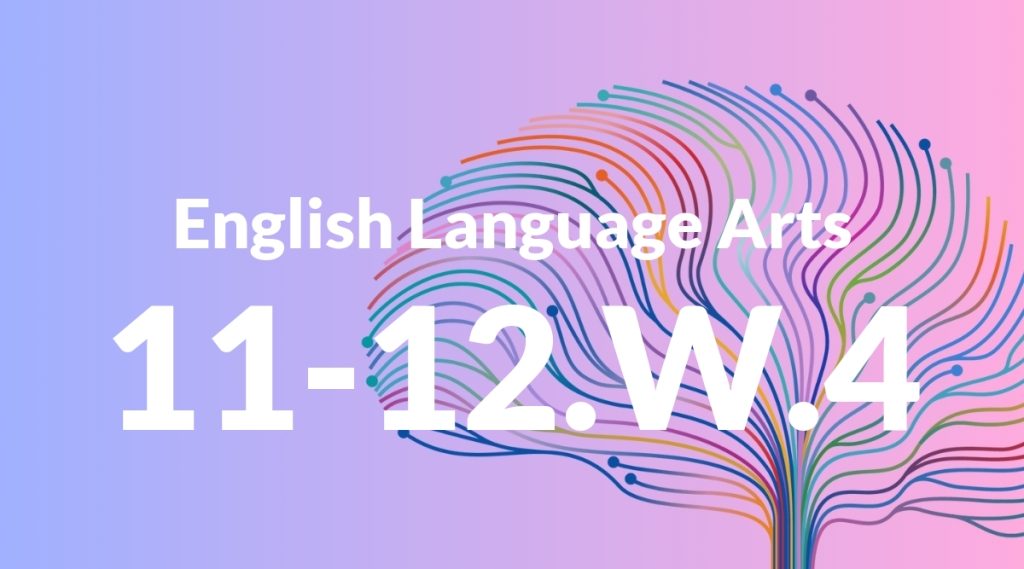Standard: 11-12.W.4 – Produce clear and coherent writing in which the development, organization, and style are appropriate to task, purpose, and audience. (Grade-specific expectations for writing types are defined in standards 1-3 above.)
Grade level: Grade 11-12
Subject: English Language Arts
Domain: Writing
Teacher Overview
This standard emphasizes the ability to produce writing that is clear and coherent, with appropriate development, organization, and style tailored to the specific task, purpose, and audience. Mastery of this standard is crucial for students as it prepares them for various real-world writing scenarios they will encounter in higher education and professional settings. Students should have a foundational understanding of different writing types, basic grammar, and paragraph structure. They should also be familiar with the concept of audience and purpose in writing.
Mastering this standard will enable students to handle more complex writing tasks, such as detailed research papers and professional reports, with confidence and competence.
Common Misconception 1
A common misconception is that writing style is not important as long as the content is accurate. This is incorrect because the style of writing significantly impacts how the message is received and understood by the audience.
Intervention 1
To address this misconception, teachers can use peer reviews and provide examples of effective writing that highlight how style enhances clarity and engagement.
Common Misconception 2
Another misconception is that organization is only necessary for longer pieces of writing. This is incorrect because even short pieces need a clear structure to convey their message effectively.
Intervention 2
Teachers can provide exercises that focus on organizing short writing assignments, demonstrating the importance of structure in all forms of writing.
Prerequisite Knowledge
Students should have a solid understanding of basic writing structures, including sentence and paragraph construction, and be familiar with different types of writing such as narrative, expository, and persuasive writing.
Subsequent Knowledge
After mastering this standard, students will be able to tackle more complex writing tasks, such as crafting detailed research papers, professional reports, and advanced literary analyses.
Instructional Activities
- Peer review sessions focused on writing style
- Workshops on organizing short essays
- Analyzing examples of effective writing
- Writing exercises tailored to different audiences and purposes
- Creating outlines for various types of writing tasks




